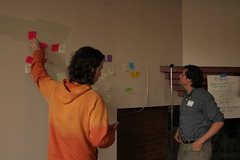Overall though, the main reason why foreign entertainment firms are flocking to India is the cost advantage the country offers. As an example, US animators can cost about $125 an hour; in India, they cost $25 an hour. Toonz Animation offers animation at 25 per cent to 40 per cent lower rates than other Asian studios and much lower than those of American studios. The total cost for making a full-length animated film in America is estimated to be $100 million to $175 million. In India, it can be made for $15 million to $25 million.Studios in India are also able to provide a large supply of low-cost, high-quality software engineers, even going so far as to establish studios outfitted with state-of-the-art hardware and software to carry out production overseas.
The Walt Disney Company has outsourced a number of major animation projects to studios throughout India. Cable and satellite station Cartoon Network is buying animation films made in India while MTV has added India to its outsourcing center along with the Philippines and South Korea. Applied Gravity, a multimedia company in New Zealand, has outsourced almost 90% of it animation work to Satyam Computer Services business process outsourcing subsidiary, Nipuna Services. An animatronics dog for The Discovery Channel’s Animal Planet from popular episode called “K9 to11” and animatronics models for New Zealand theme parks were some of the best-known creations of Applied Gravity in India.













 "Creativity involves breaking out of established patterns in order to look at things in a different way." - Edward de Bono
"Creativity involves breaking out of established patterns in order to look at things in a different way." - Edward de Bono